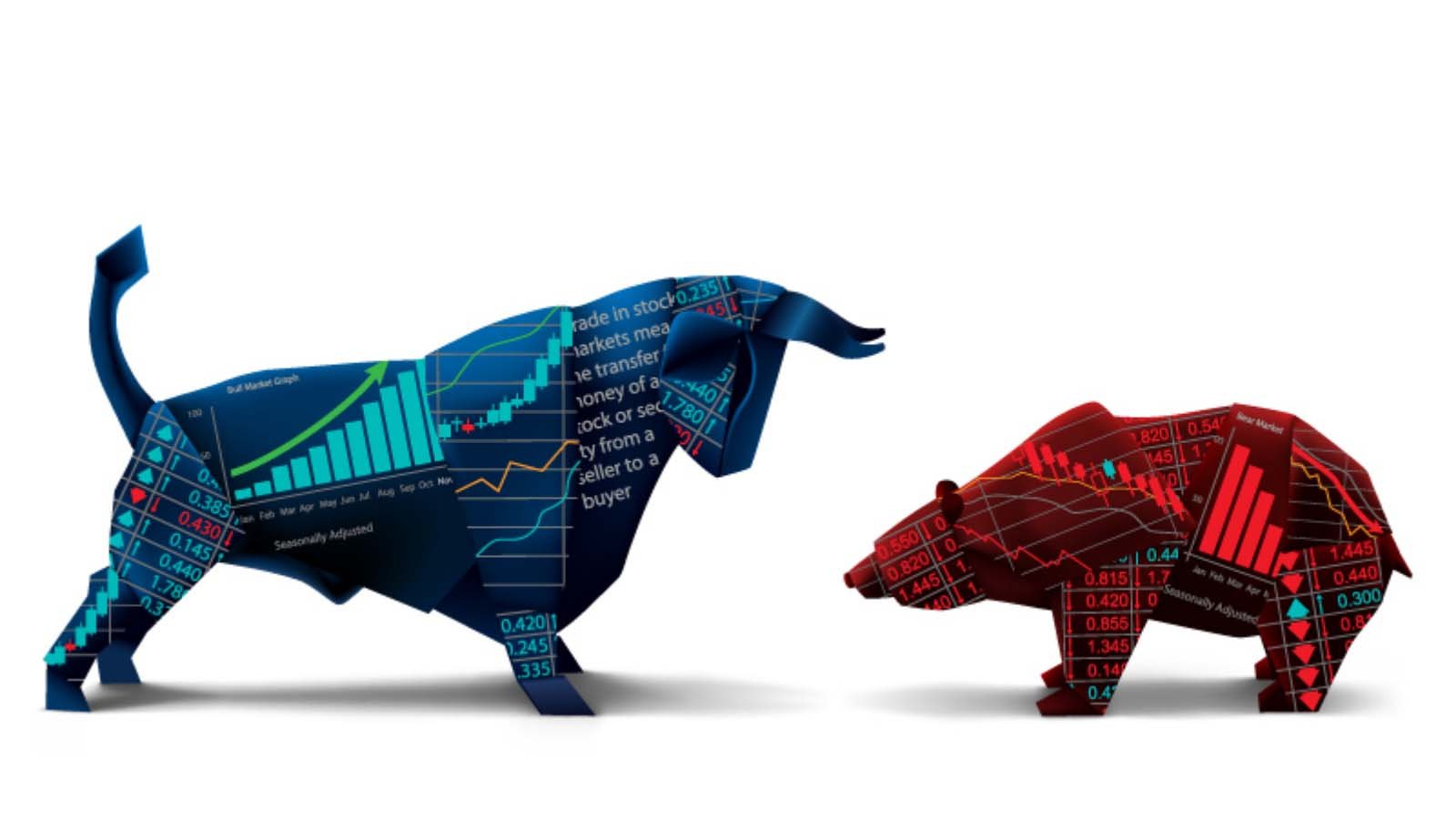
What if Wall Street is wrong about the timing of rate cuts? … Wall Street’s awful record of bets on the Fed … the difficulty of this final leg for the Fed … Ackman vs Bianco
What if Wall Street is wrong about rate cuts?
A surefire way for investors to lose money (or miss out on making money) is by adopting a market belief then refusing to consider the other perspective.
The market has been on a tear for weeks… people are making money… and there are reasons to be excited as we look to 2024, perhaps most all because of the likelihood of rate cuts.
This is why for months here in the Digest we’ve encouraged readers to trade this market higher while we have such favorable conditions.
But what if Wall Street is wrong about next year’s rate cuts? Specifically, wrong about their timing and size?
Wise investors must be open-eyed about the possibility of a Federal Reserve disappointment, even as we enjoy a rising market today.
What if Federal Reserve Chairman Jerome Powell isn’t showing us a poker face, and rate cuts aren’t just around the corner?
Last Friday, speaking at Spelman College in Atlanta, Powell said:
It would be premature to conclude with confidence that we have achieved a sufficiently restrictive stance, or to speculate on when policy might ease.
This message isn’t new.
Let’s rewind to Powell’s press conference after the November Fed meeting when he said:
The fact is the committee is not thinking about rate cuts right now at all. We’re not talking about rate cuts.
We’re still very focused on the first question, which is “have we achieved a stance of monetary policy that’s sufficiently restrictive to bring inflation down to 2% over time, sustainably?” That is the question we’re focusing on.
The next question, as you know, will be “for how long will policy remain restrictive?” And what we’ve said there is that we’ll keep policy restrictive until we’re confident that inflation is on a sustainable path down to 2%. That’ll be the next question.
But honestly, right now, we’re really tightly focused on the first question. The question of rate cuts just doesn’t come up because I think it’s so important to get that first question as close to right as you can.
But don’t tell this to Wall Street.
It’s convinced that not only are rate hikes done, but rate cuts are rapidly approaching – potentially as soon as next month.
As I write Monday morning, the CME Group’s FedWatch Tool shows traders putting 12% odds on a January cut. And if we look farther out to March, those odds explode to 52%.
So, is Wall Street seeing through Powell’s poker face and correctly reading the tea leaves?
Perhaps. But if so, this time will be the exception.
***Wall Street has bet against Powell repeatedly over the last two years…and been consistently wrong
Deutsche Bank recently conducted a study, evaluating how markets priced in its expectations for upcoming Fed policy decisions.
The track record isn’t good.
From Business Insider:
The stock market has been on a tear over the last month on hopes for a dovish pivot from the Federal Reserve, but investors have seen this movie before.
In fact, markets have incorrectly priced in such a pivot six times over the last two years, according to Deutsche Bank, which sounded cautious about this seventh time.
As we’ve noted out here in the Digest, in the long-term, what drives stock prices are earnings. But in the short-term, the greatest influencer is surprises to expectations. Given that the dominant expectation is now for rate cuts in early/mid-2024, the biggest risk today is a steep market pullback if Powell and company don’t meet these expectations.
“But Jeff, the data are all pointing toward a soft landing. Look at all the analysis suggesting such an outcome. The Fed is seeing the same soft-landing data. The Fed bluster is just their effort to keep asset prices from climbing too high, too fast.”
That’s certainly possible. I hope it is.
***But let’s keep some perspective on this growing certainty about a soft-landing outcome
Just because more people are proclaiming a soft landing doesn’t mean one is coming. In fact, you could argue all it means is we’re closer to the hard landing.
Below, we look at the chart from Bloomberg dating back to 1995.
The spikes you’ll see represent the number of news articles mentioning the phrase “soft landing.”
You’re going to see huge spikes in 2000, before the dot com crash… 2006/2007 before the housing crisis… 2012, before a growth slow down… and then the past two years.

For Wall Street, hope springs eternal, yet as the chart’s subhead reads, “optimism tends to peak before a downturn hits.”
To be clear – we could pull off a soft landing (and we hope we do). But its likelihood doesn’t increase just because the financial press and headlines declare that it will.
***Why a soft landing will be so tricky for the Fed
So far, the playbook for the Fed has been relatively simple – go big with interest rates because inflation has been blazing. This time last year, the Fed was coming off a stretch of repeated 75-basis-point hikes – basically a sledgehammer approach.
And it has worked – kudos to the Fed!
But we’ve now entered a new period in which the Fed’s interest rate is believed to be “sufficiently restrictive” to eventually achieve the 2% inflation rate target.
But rather than be able to coast across the finish line in victory, this final leg is the most dangerous of all.
That’s because rather than using a sledgehammer in this phase, the Fed must switch to a scalpel. Ultimate precision is required to safely pull off this operation. Unfortunately, history shows the Fed is awful with scalpels.
You see, as inflation slows, it creates the risk that a Fed policy of “holding rates steady” has the same net effect as the Fed continuing to tighten rates. And that keeps a recession as a real possibility.
As a crude example, imagine the Fed is tightening at a theoretical speed of “5.” Meanwhile, inflation is impacting the economy at a theoretical speed of “4.”
Well, in this case, the net effect is a tightening of “1.” And let’s say that this net speed of 1 is the sweet spot. It’s the amount of tightening that’s just right for the economy to pull off the soft landing.
Now, here’s the curveball…
Let’s say that due to the lag effect of how/when interest rates impact the economy, inflation keeps falling and its theoretical speed drops from “4” to a “2.5.”
Well, this situation, even though the Fed didn’t change its theoretical speed of “5,” it now results in a net tightening of 2.5.
This squeezes the economy further, resulting in lower profits and new layoffs (right on cue, this morning brings word that Spotify is laying off 17% of its work force…and last Friday, I got word from a friend asking for help finding a job in the wake of his company’s downsizing).
Suddenly, we’ve blown past that Goldilocks net speed of “1,” and the new tightening rate of “2.5” puts us in jeopardy of a recession.
This “net tightening rate” that we’re discussing relates to the “real rate of interest.” And the key question as we enter 2024 is “as inflation slows, is this real rate going to enable the economy to safely touch down…or crash?”
Very smart individuals disagree.
***It’s Ackman versus Bianco
Last week, Bill Ackman, the CEO of Pershing Square Capital Management, spoke to this risk we just discussed. He believes the Fed will have to cut rates in Q1 2024 because if they don’t, the real rate of interest will be too stifling to the economy, tipping us into a recession.
From MarketWatch:
One of the biggest expectations for the coming year is that the Fed will pivot to cuts in 2024.
Bill Ackman…doesn’t disagree, saying that needs to be done ASAP.
“I think the market expects sometime middle of next year. I think it’s more likely as early as Q1 [first quarter]” …
Ackman believes a weakening economy will “likely demand an earlier move…we’re seeing evidence of that in some of our companies…I have some concerns,” he said…
Ackman explained that the Fed sticking to the mid 5% range on rates, with inflation trending below 3%, will mean a “very high real rate of interest.”
Meanwhile, Jim Bianco is the president and macro strategist at Bianco Research. He’s a very smart guy who has correctly called many of the bond market’s biggest shifts.
Bianco disagrees with Ackman over the definition of “very high real rate of interest.”
He makes a point that we’ve detailed before in the Digest – namely, that 5.5% interest rates are only “high” relative to the 2010s, which was characterized by virtually no inflation, 0% interest rates, and loads of quantitative easing.
But if you look at 5.5% interest rates over a multi-decade period, that level isn’t abnormally high at all.
From Bianco:
They assume that real yields during the QE period from 2009 to 2020 were ‘normal’ and the current level is ‘abnormal.’
I’ve argued this has the anchoring backward. Current real yields are now normal, and the 2009 to 2020 real yields were ‘abnormal.
By Bianco’s logic, the Fed shouldn’t be concerned at all by holding rates steady. Cutting them would risking juicing the economy, potentially resulting in a new flare up of inflation, risking a repeat of the 1970s.
Again, both these guys are very bright, so treating their respective perspectives with thoughtfulness and consideration would be wise. Yet, if we look at how Wall Street is pricing stocks, it’s wholly bought into Ackman’s outlook, ignoring Bianco.
Circling back to the top of this Digest…
What if Wall Street is wrong?
***Despite our lingering hesitation to go “full bull,” our advice remains the same…
Let’s keep trading this bull market higher as long as we can. That gameplan has worked for us all year, so let’s not change course now.
Wise investors adapt to the market for what it is, not what their narrative suggests it should be. So, even if you lean bearish, recognize that today’s market has bullish momentum.
Therefore, let’s benefit from the expectation of an “Ackman” environment in 2024, while being prepared for a “Bianco” spoiler.
So, get exposure to this market, but don’t fall in love with your stocks, mind your position sizes and stop-losses, and always see market conditions for what they are, not what you want them to be.
But, for now, this is a money-making market. Let’s benefit.
Have a good evening,
Jeff Remsburg





